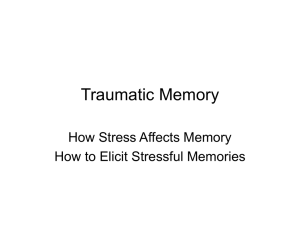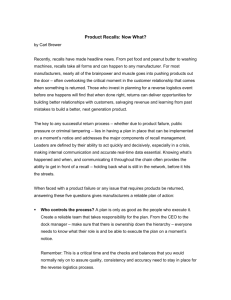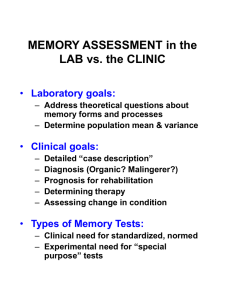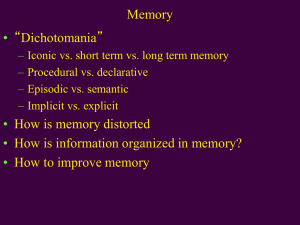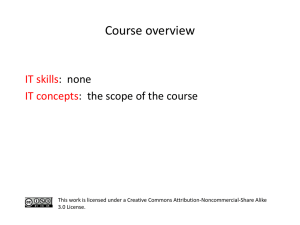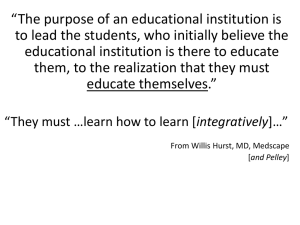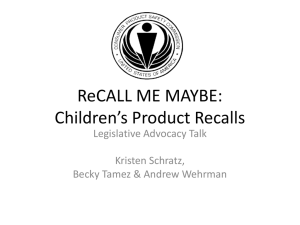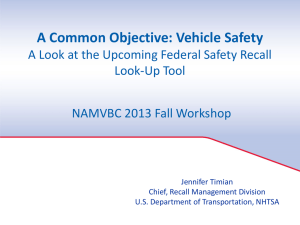24-Hour Food Recalls - University of Missouri Extension
advertisement
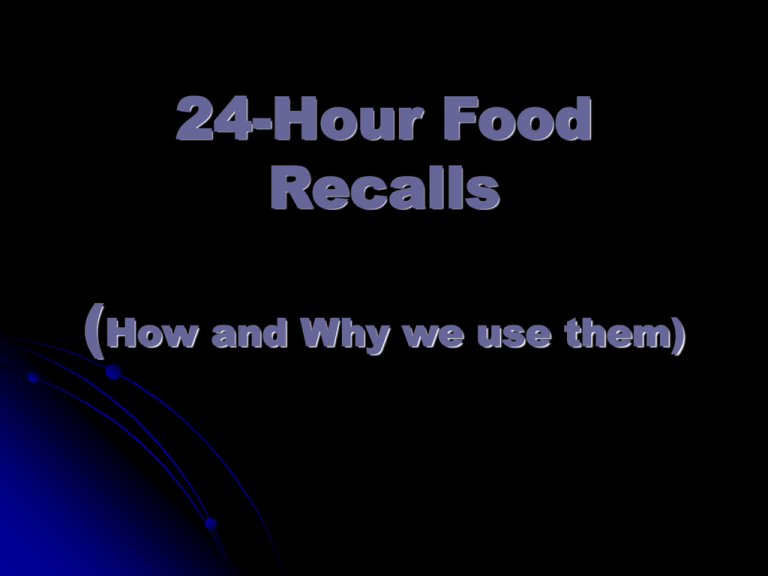
24-Hour Food Recalls (How and Why we use them) Food Recalls Measure Program Effectiveness Change is our primary evaluation -food consumed -behavior changed We can prove that our programs make a difference It is our evaluation that keeps the funding coming year after year Goal of Food Recall Accurate and complete listing of all food and drink consumed in the last 24 hours. When to Take Food Recalls Before you begin teaching After 3 to 6 lessons At your last session What We Want to Learn From the Food Recall What food was eaten? How much was eaten? How was it prepared? How was it served? Use Your Food Recall Kit Each Time You Take A Recall It is easier for the participant to recall food and beverage amounts when you have visual aids Results will be more accurate Lay the contents of the kit out on the table where everyone can see them Contents of the Kit Measuring cups and spoons (Liquid and Dry) 4 oz. cup, 8 oz. cup, 12 oz, 16 oz, cup CD Deck of cards or the palm of your hand Food Models Red Dinner Plat Plastic container with 2 to 3 cups of rice Plastic container with 2 to 3 cups of dried beans or dry cereal Preparation for the Food Recall Plan 20 -30 minutes to take a recall Need paper, pen, Food Recall Kit For groups, need posters Use the Multi-Pass Method of taking the recall. Multi-Pass Method Step #1 Quick List Step #2 Detailed Description Step #3 Review Tips for getting better recalls Explain why you are asking questions Take the recall based on yesterday’s intake and work backwards Don’t approve or disapprove with body language or words Follow up Tips for getting better recalls Relate eating to time of day and what they were doing to help them remember Use your Food Recall Kit—ask the participant to point to serving sizes Use open-ended questions Tips for getting better recalls Ask about added ingredients or condiments Avoid labeling meals Avoid leading questions Guide to Interview: Opening Introduce yourself. Discuss purpose of the 24-hour recall. Discuss purpose of what you will do with the client’s 24-hour recall. Explain purpose of FNEP or EFNEP, depending on the person. Establish Rapport Make small talk; find out about the person you are interviewing. Allow person to ask questions and make comments, as necessary. Comfort Zone Watch your own body language to make yourself look approachable. Sit next to or near client, not directly across. Every person has a different comfort zone. No Interruptions Allowing few interruptions shows the client that you care about him or her and want to give your full attention. Ask the client if you can turn down the TV or Radio. Turn sound off cell phone Guide to Interview: Exploration Ask open-ended questions to help client remember foods eaten in the last 24 hours. Be Attentive Look at interviewee while she or he is speaking. Nod or say “hmmm” to show that you are listening. Ask detailed questions when interviewing. Non-verbal behavior shows your attentiveness, too! Be Patient Be patient; not all clients know how to remember everything eaten in the last 24 hours. Allow for questions and comments. Privacy Do not share information about other’s diets if not appropriate. Let client know that you respect his/her privacy and will keep things between the two of you. Hold interview where client feels as if he/she has enough privacy. Take Notes Take notes to help you remember what was said and to help you discuss with the client what was eaten. Be Sure to Ask! Quantities listed for each food? Use examples to show volume. Bread eaten at a meal – what type? Is it whole wheat? Type of fat added to foods – butter, margarine, etc.? Be Sure to Ask! Milk or sugar added to cereal, coffee, tea, etc.? List all ingredients in sandwich, salad, or casserole Type of cereal? Type of milk? Be Sure to ask about Mixed Dishes Can request to see the label to determine ingredients, serving size, and calories—then ask how much the participant ate If homemade, ask how much of each ingredient was used in the whole recipe—then ask how much of the whole they ate Don’t Forget How was food served? (What is added can be significant) How much water? How much alcohol did they consume? Guide to Interview: Closing Thank client for his/her patience and cooperation. Discuss questions and comments client might have. Review 24-hour list. Tell your client they will be receiving a printout of their food recall and a diet summary at your next visit Give your client a copy of “What Should I Eat?” Group 24-Hour Dietary Recall Organize the participants into groups of five. Or keep the larger group intact Distribute the food recall forms Set up visual aides Multi-Pass Process Quick List Detailed Description Poster of probing questions Review Closing Thank the participants Tell the participants that they will be getting a printout of their food recall and a summary of how their food intake meets USDA’s My Pyramid recommendations. Give each participant a copy of “What Should I Eat?”

